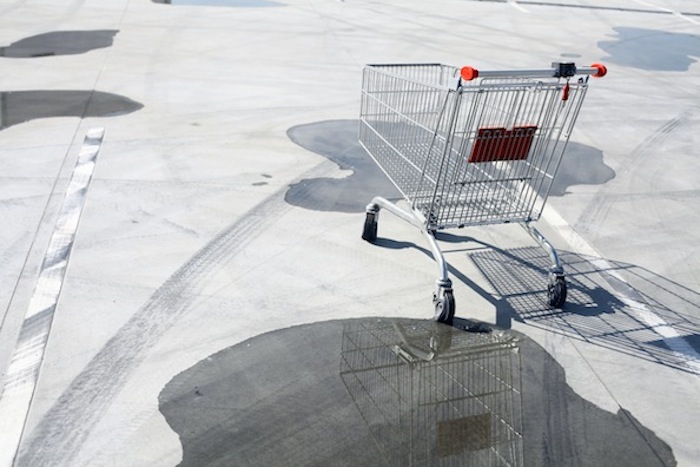We’ve all done it. Spent ages browsing through a website for the perfect items, added them to our basket, then at the last minute changed our mind and abandoned that basket before checking out. We are not alone in this. Research in 2015 by HubSpot, indicates that an astonishing 67.4% of consumers abandon their basket rather than checkout! The equivalent of two thirds of customers walking away from the checkout in your local supermarket!

If anything, the problem is getting worse! A SaleCycle report in Q3 2016 found the average abandonment rate from 500 leading global brands to be 74.4%!
So why do people do this? The image below – part of an infographic also from Hubspot – indicates that the main reasons are:
- 41% hidden charges at checkout
- 29% having to register before buying
- 11% unclear delivery details
- 10% lengthy checkout process
- 8% phone number not provided on website

Lessons to be learned from the above about how as a multichannel business you can improve your systems and processes to prevent basket abandonment in the first place. But what can you do to woo back those customers who have abandoned their baskets?
Many companies use basket abandonment emails. But do they work? Is there any real chance that the abandoner will return to checkout? Interestingly, research by SaleCycle indicates that:
- 11.61% of basket abandonment emails are clicked
- 44.1% of all basket abandonment emails are opened
- 29.9% of clicks lead to a purchase back on site
- The average order value of purchases from basket abandonment emails is 14.2% higher than typical purchases
- Overall, every basket abandonment email sent equates to around $8 (£6.40) in revenue

Companies who use abandonment emails effectively often have a three-pronged approach. For example, a first email is sent within half an hour of abandonment to check that there are no technical difficulties that need to be addressed.
This is followed up by another email a day or so later, perhaps with an offer on the item. A final email is sent after a week with a clear call-to-action of the final opportunity to checkout the basket before it is emptied.
But what about the emails themselves? If the tone is not right then that will alienate the customer rather than wooing them back! Here are 8 guidelines for effective basket abandonment emails:
- Ensure you have a clear email subject line that informs the customer why they are being retargeted, so that it won’t just be ignored
- Personalise! Make effective use of the customer’s details that you already have
- Remind them of the abandoned items, using images of the items in the basket. Why not add a sense of urgency by revealing how many of the items are left in stock and how fast they are selling?
- If the desired items are no longer in stock, then recommend similar items in the email
- Underline your site’s excellent returns policy to remove any risk from purchasing
- Clarify your delivery charges: even better offer free or discounted delivery. This may be the final obstacle to purchase!
- Include a direct link back to the basket that removes the inconvenience of browsing and signing in
- Include positive customer reviews of the items abandoned
As well as having relevant and persuasive content, think how your consumers are likely to engage with the email. Just as you are a multichannel business so are they a multichannel consumer! A recent survey of US consumers by Mapp Digital found that 72% of respondents regularly check their emails using a smartphone rather than a desktop or tablet, and this figure rises to 91% for 18-24 year olds.
So for smartphone users the emails need to be well laid out and clear to read. Bear the following in mind:
- Generally stick with a wide single column format
- Keep the content above the fold relevant so that consumers are more likely to scroll down the page
- Use a large font that has a strong contrast against the background
- Ensure that all images are large enough to be recognisable
- Use white space effectively to showcase images and copy
- Make calls-to-action large with a clear button
So, if you are one of the many multichannel businesses losing revenue due to basket abandonment then there is a lot you can do to prevent this happening in the first place – and yet more you can do to recover the situation when it does still happen. If you start following the above guidelines as from now then hopefully the very sad tale of the abandoned basket will have a happy ending!
Author: Robert Walker
